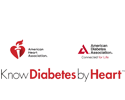It Takes a Community for Effective Disease Prevention and Management
To help stem the tide and high cost of persisting disparities in U.S. health care, providers are leveraging Community Health Workers (CHWs) as critical players in improving health outcomes by successfully linking “vulnerable” patient populations to better care. Living in the communities where they work, CHWs understand what is meaningful to those communities, communicate in the language of those they serve, and incorporate cultural buffers to help patients cope with stress and promote health outcomes.
As the CDC reports, growing evidence supports the involvement of CHWs as a critical link between providers and patients in the prevention and control of chronic disease:
- They help high-risk populations, especially African-American men in urban areas, to control their hypertension.
- They enable diabetic patients to reduce their A1C values, cholesterol triglycerides and diastolic blood pressure.
- Their interventions improve knowledge about cancer screenings as well as screening outcomes.
- Their interventions help patients reduce the severity of asthma.
Many Americans – especially those with low incomes, have no insurance or face other socio-economic barriers to primary care – often distrust the health care system, or lack the resources and awareness needed to take charge of their health. As a result, they wait until health issues and chronic disease escalate enough to drive them into the emergency department, where they receive short-term solutions that drive up the total cost of health care.
CHWs are changing that, community by community. Examples of CHW programs – both at home and abroad – abound. One is Penn Medicine’s IMPaCT Program.
IMPaCT (Individualized Management for Patient-Centered Targets) pairs patients in need of extra support with relatable neighbors and peers (people who have shared language, ethnic and geographic backgrounds) to assist them in navigating the medical system and identify the underlying causes of illness.
“Lower income patients tend to poorly manage chronic disease and have worse health outcomes than other patient populations,” explains Dr. Shreya Kangovi, Director of the Penn Center for Community Health Workers, which houses the IMPaCT program. “They are less likely to get preventive care and more likely to end up in the hospital. This scenario leaves health care practitioners frustrated, because they can’t move the needle on health outcomes. And it makes it difficult for the health system to meet its quality targets.”
Dr. Kangovi notes that many patients served by IMPaCT didn’t have a relationship with a primary care physician prior to joining the program.
“There is a lot of focus today on reducing hospital re-admissions,” she says. “But before we can reduce re-admissions, we need to make sure patients have a substitute for the emergency department.”
She shared the story of “Ben,” a young man with a bad case of lupus and no insurance. Ben had been visiting Penn’s Emergency Department regularly for lupus flare-ups. There, he received steroids and pain medications before being sent along his way. Thanks to IMPaCT, Ben was set up with a primary care doctor who understands his health problems, and placed Ben on a better medication regimen. Not only does Ben now feel better, he has more trust in the health care system that he sees as an ally, she says.
IMPaCT currently serves about 500 patients via two programs – one for hospitalized inpatients and one for primary care outpatients. The program’s CHWs meet with patients upon admission to the hospital to set short-term goals and identify pathways to solving their clinical and socioeconomic hurdles. They advocate for patients during their hospitalization, then work with them during discharge and beyond to get them connected to resources in their community. On the primary care side, patients work with their IMPaCT partner over six months to break long-term health goals down into smaller, achievable steps.
“Once patients leave the hospital, real-life issues intervene,” Dr. Kangovi says. “IMPaCT’s community health workers address these health and life issues on the ground, and do so much better and at a much lower cost than clinically trained personnel.”
Are CHWs making a difference where you live? How are they helping to reduce costs and improve access to health care?


















